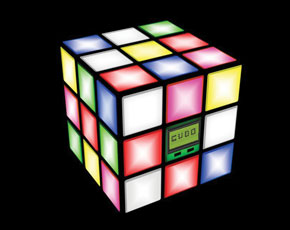
LEDs, videogame and sound in an electronic puzzle from Unespunesp
An electronic version of Rubik’s cube, a well-known three-dimensional puzzle, with sounds, and which allows the user to auto-scramble and auto-solve the puzzle, was developed by researchers at Universidade Estadual Paulista (Unesp), Ilha Solteira. The colors of the pieces are from light emitted by LEDs (light-emitting diodes) instead of stickers or paint. These LEDs are part of an electronic circuit and can take on any color. “When the user solves the puzzle, the software generates visual and auditory signals, the former appearing on a display,” says Pedro Ferreira Mamede, who developed the innovation during his undergraduate studies in electrical engineering, supervised by Professor Alexandre César Rodrigues da Silva. Game statistics, such as the number of movements to solve the puzzle, the number of attempts and the time spent can be displayed and form a sort of database with the history of the puzzle. “The idea was to transform the toy into a kind of video game.” There are two special functions: the learning feature, in which the software interacts with the user to teach basic and advanced methods to solve the puzzle, and the save game feature, typical of a computer program. The new electronic version, which is in the prototype stage, allows movement similar to that of a normal Rubik’s cube. “The electronic Rubik’s cubes on the market are solid and simulate movement via buttons or touch,” says Mamede.
Republish